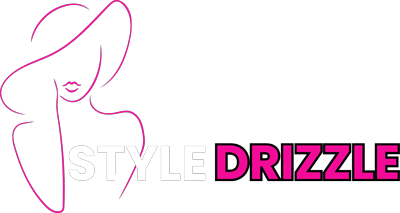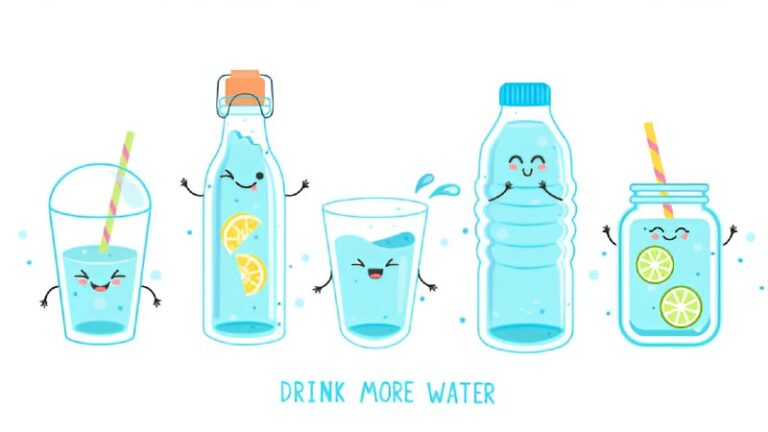Staying hydrated is essential for maintaining energy, cognitive function, and overall health. Yet, despite knowing the benefits, many people struggle to meet daily water intake goals. With busy schedules and competing priorities, water often takes a backseat. The good news is that hydration can be fun, convenient, and even creative.
Why Proper Hydration Matters
The human body is approximately 65% water, and every system relies on adequate hydration. Insufficient water intake can affect:
- Brain function: Impaired focus, memory issues, and mood swings
- Heart health: Increased strain on circulation and blood pressure
- Digestive system: Constipation and slower metabolism
- Detoxification: Reduced efficiency of kidneys and liver in removing toxins
- Temperature regulation: Difficulty maintaining optimal body heat during activity
According to the Institute of Medicine, women need approximately 91 ounces (about 11.5 cups) of total fluids daily, while men need 125 ounces (15.5 cups). This includes water from foods and beverages.
Common Hydration Challenges
Even with awareness of water’s benefits, daily hydration can be difficult. Common obstacles include:
- Forgetting to drink regularly
- Disliking plain water
- Busy schedules that prevent mindful drinking
- Environmental factors, like dry climates
- Age-related reduced thirst cues in older adults
Creative Hydration Hacks
Beyond the basic tips, creativity can transform hydration from a mundane task into an enjoyable daily habit. Here are some innovative approaches:
1. Flavor Infusions with a Twist
Adding natural flavors to water increases palatability without adding sugar or calories. Go beyond traditional lemon or cucumber slices:
- Exotic fruit combinations: Dragonfruit with mint, pineapple and jalapeño, or kiwi and basil
- Herb-forward blends: Rosemary with grapefruit, thyme with strawberry, or lavender with blueberry
- Tea-based infusions: Green tea or hibiscus tea as the base, chilled or warm, can boost antioxidants while hydrating
Example: A 32-ounce water bottle infused with 1/2 cup strawberries, a few sprigs of basil, and a wedge of lemon provides refreshing flavor without sugar and encourages sipping throughout the day.
2. Hydration-Trigger Routines
Pairing water intake with existing habits can help turn hydration into a subconscious behavior:
- Drink a full glass after brushing your teeth in the morning and evening
- Take a sip before and after every Zoom meeting or phone call
- Pair water intake with meals and snacks to reinforce routine
Routines not only create consistency but also reduce the mental effort needed to remember to hydrate.
3. Functional Ice Cubes
Ice can be more than just a way to chill drinks—it can enhance hydration appeal and nutrition:
- Freeze small fruit chunks (blueberries, raspberries) with herbs like mint or basil
- Create flavored ice cubes using herbal teas or 100% fruit juice to gradually release flavor
- Add electrolytes or coconut water to ice trays for post-workout hydration
Functional ice cubes transform a plain glass of water into an interactive, visually appealing drink.
4. Hydration Gamification
Turning water intake into a game or challenge increases motivation and adherence:
- Use a mobile app to track consumption and set daily goals
- Challenge friends, coworkers, or family to water streaks with rewards for consistency
- Use a color-coded water bottle that changes visual indicators based on intake milestones
Gamification adds an element of fun and accountability, especially for those who struggle with routine habits.
5. Smart Water Bottles and Technology
Modern hydration tech can help make drinking water automatic and measurable:
- Smart bottles with built-in reminders or LED indicators
- Bluetooth-connected bottles that sync with health apps to track intake and provide notifications
- Temperature-controlled bottles that keep water cold for hours, encouraging sipping
These tools are particularly useful for tech-savvy individuals who benefit from visual cues and feedback.
6. Incorporate Hydrating Foods Strategically
About 20% of hydration comes from foods. Choosing water-rich foods can boost total fluid intake:
| Food | Water Content (%) |
|---|---|
| Cucumber | 96% |
| Watermelon | 92% |
| Strawberries | 91% |
| Lettuce | 95% |
| Tomatoes | 94% |
Snacking on these foods or adding them to meals can complement liquid intake naturally.
7. Layered Beverages
Mixing water with low-calorie flavor boosters can add excitement:
- Agua fresca: Blend fruit with water and herbs for a fiber-rich, hydrating beverage
- Herbal iced teas with citrus and berries
- Sparkling water with a splash of 100% fruit juice for carbonation and flavor
Layering flavors can make hydration feel more like a treat than a chore.
Hydration Tracking Methods
Monitoring fluid intake ensures you’re meeting daily goals. Consider these tracking methods:
- Apps like WaterMinder or MyFitnessPal to log intake
- Visual markers on reusable bottles
- Rubber band method: Move a band from one side of the bottle to another after finishing a refill
- Journaling or sticky notes on your desk as reminders
Hydration Statistics and Insights
Understanding your needs and risks can enhance commitment:
| Factor | Recommendation |
|---|---|
| Average water intake for women | 91 ounces/day |
| Average water intake for men | 125 ounces/day |
| Percentage of water from beverages | 80% |
| Percentage of water from food | 20% |
| Fluid loss from average adult per day | 2–3 liters |
Hydration requirements vary based on age, activity level, climate, and diet. Staying proactive, rather than waiting for thirst, ensures optimal bodily function.
Hydration Safety Tips
While drinking water is essential, balance is key. Consider:
- Drinking gradually throughout the day to avoid hyponatremia (overhydration)
- Balancing water intake with electrolytes during intense exercise
- Monitoring urine color for hydration status: pale yellow is ideal
- Ensuring water quality by using filtered or clean sources
Conclusion
Creative hydration doesn’t have to be complicated. By combining flavorful infusions, technology, habit-based routines, gamification, and water-rich foods, you can increase daily water intake without stress. Remember, small adjustments like functional ice cubes, reusable bottles, or a hydration challenge with friends can make a big difference over time.
Ultimately, the most effective hydration strategies are those that integrate seamlessly into your lifestyle, suit your taste preferences, and turn water drinking into a positive, rewarding habit. Start today, experiment with creative hacks, and enjoy the benefits of optimal hydration every day.
Frequently Asked Questions (FAQs)
How much water should I drink every day?
Most adults should aim for about 91 ounces (11.5 cups) for women and 125 ounces (15.5 cups) for men daily. This includes water from beverages and high-water-content foods.
What are some creative ways to make water more enjoyable?
Try infusing water with fruits, vegetables, and herbs, making sparkling water blends, using functional ice cubes, herbal teas, or preparing agua fresca with fresh fruit and herbs.
Can I get hydration from food?
Yes. About 20% of daily hydration comes from water-rich foods such as watermelon, cucumber, lettuce, tomatoes, and strawberries.
How can I remember to drink water consistently?
Create routines (e.g., drinking water after brushing teeth or before meals), use phone alarms, hydration-tracking apps, or smart water bottles with reminders.
Is it possible to drink too much water?
Yes, excessive water intake can lead to hyponatremia, a condition where sodium levels become diluted. Most healthy adults are not at risk if they drink gradually and balance intake with electrolytes during intense activity.
Does water quality affect hydration habits?
Absolutely. Water that tastes or smells unpleasant may discourage drinking. Using filtered or clean sources improves taste and encourages consistent hydration.


